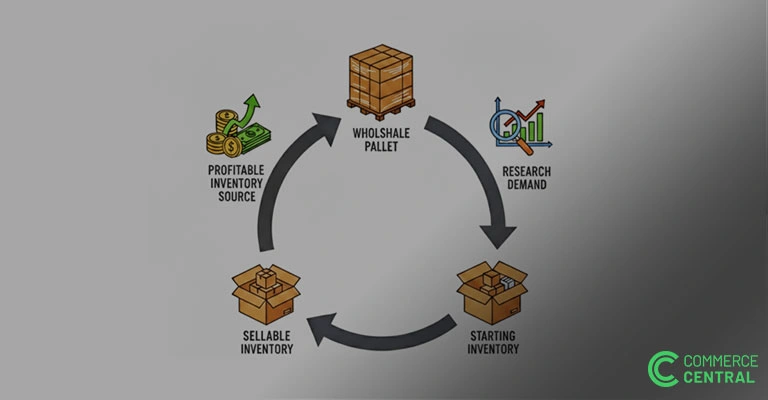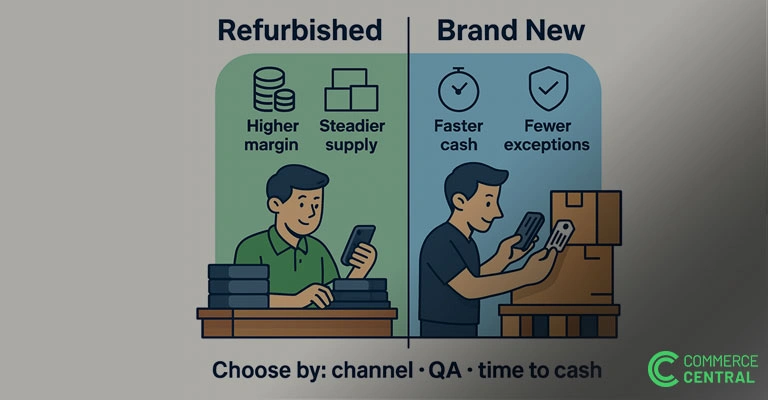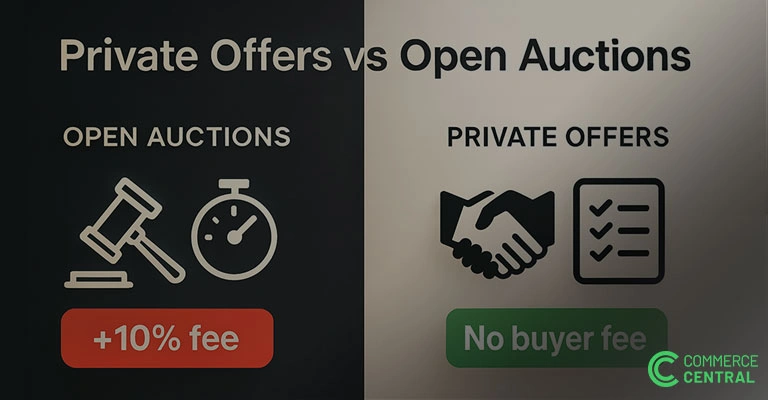
Wholesale Pallets for Sale: A Playbook for New Resellers
Find out how to source products smartly! Our wholesale pallets for sale guide helps new resellers buy confidently and start their eCommerce journey right.

If you enjoy selling at a flea market or swap meet, it can be a lucrative side hustle because there is low overhead, direct cash flow, and feedback from customers. But for that to work, you also need Inventory that is cheap, varied, and catches people’s eyes. This means finding wholesale liquidation in a way that you feel comfortable with, how it corresponds to your local market and price points. This is how smart side-hustlers do it.
What makes a flea market goer stop in his or her tracks? Visual variety. The more random or quirky your table looks, the more people are going to want to stop and peruse. This is why so many do flee market sellers purchase mixed lots of general merchandise returns, estate sale cleanouts, or assorted category pallets.
Commerce Central sells mixed pallets of surplus inventory, usually from big stores that provide a broad assortment of items in one purchase. You might receive tools, home goods, small gadgets, or seasonal items in the same box.
Unlike with formal retail, flea markets allows you to resell broken or even just partially working goods. You could get a pallet of electronics returns, and 60% are perfect working items, another 20% that can get repaired quite easily, so it’s just bench repair stuff, and about 20% scrap. If you are handy, or know someone who is — well, that’s a goldmine.
For example, A pallet of returned vacuums could be going for $400. You can fix and sell 6 at $50 apiece, strip the rest for parts, and make out. Your ability to know what type of return loads you’re getting based on condition grade and seller transparency is made easier with Commerce Central.
Shipping is a significant cost, especially when margins are thin. Most flea market vendors who buy close outs in this way will pick their merchandise up locally at the regional warehouse or broker, eliminating any freight charges.
Commerce Central offers location filters that let you look for products from nearby warehouses, or you can choose pickup-ready lots. This will save you hundreds in shipping and the ability to check it out before loading it on.
Not all flea markets are the same. Some skew toward tools, some baby goods, clothing, or electronics. Chat up other vendors, study what sells quickest, and tailor your sourcing accordingly.
At Commerce Central, you can search by product category as you have items to match with local needs of any kind, whether it’s home goods, accessories, or lawn products.
Cash-first bargain hunters make up the majority of flea market shoppers. Price tags of $3, $5, or $10 are conducive to quick decisions. So, work your way back: If you are buying a pallet of 300 units for $600, and factor in an average cost of goods per item ($2 to $3 in this case) to make a profit.
Commerce Central allows you to preview the average units per pallet, as well as get the cost-per-item estimates so that you can price your finds appropriately.
Flea market and swap meet vendors using Commerce Central gain access to:
Whether you’re flipping tools, baby gear, home goods, or electronics, Commerce Central helps you source smarter and sell faster.
Ready to restock for your next flea market weekend? Explore fresh pallets at https://www.commercecentral.io/

Find out how to source products smartly! Our wholesale pallets for sale guide helps new resellers buy confidently and start their eCommerce journey right.

Refurbished vs. brand-new electronics: Discover the smart buyer’s framework for B2B resale, balancing margin, speed, and inventory flexibility

Offers or open auctions - which delivers better results? Explore how invite-only bidding can outperform public auctions in achieving better deals and faster sales
Join the only private surplus distribution platform built for trusted Buyers and Sellers.